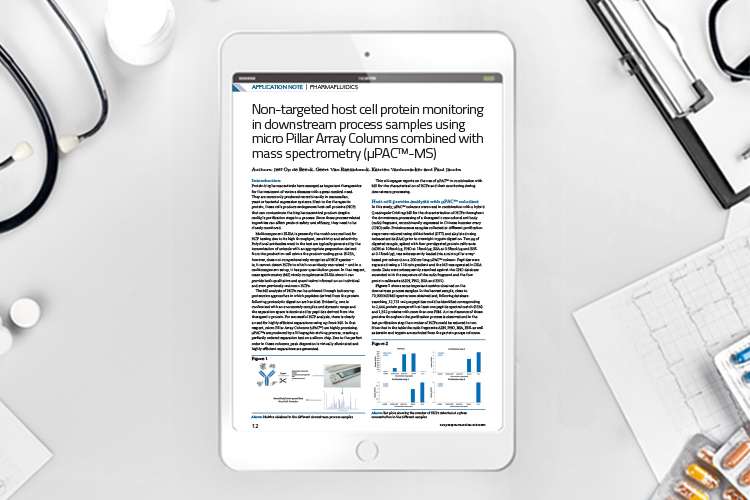Application note: Non-targeted host cell protein monitoring in downstream process samples using micro Pillar Array Columns combined with mass spectrometry (μPACTM-MS)
Posted: 19 December 2019 | PharmaFluidics | No comments yet
This whitepaper reports on the use of μPAC™ in combination with MS for the characterisation of HCPs and their monitoring during downstream processing.
Protein biopharmaceuticals have emerged as important therapeutics for the treatment of various diseases with a great medical need. They are commonly produced recombinantly in mammalian, yeast or bacterial expression systems. Next to the therapeutic protein, these cells produce endogenous host cell proteins (HCP) that can contaminate the biopharmaceutical product despite multiple purification steps in a process. Since these process-related impurities can affect product safety and efficacy, they need to be closely monitored.
Multicomponent ELISA is presently the workhorse method for HCP testing due to its high throughput, sensitivity and selectivity.
Related content from this organisation
- Application note: Non-targeted host cell protein monitoring in downstream process samples using micro Pillar Array Columns combined with mass spectrometry (μPACTM-MS)
- Application Notes & Whitepapers 2019
- Video: µPAC™ Performance at Capillary Flow Rates – PharmaFluidics’ µPAC™ Family
- Scientific poster: High-throughput proteome analysis using 50 cm micro pillar array columns (μPAC™)
- Scientific Poster & Whitepaper Gallery 2019
Issue
Related topics
Biopharmaceuticals, Downstream, Mass Spectrometry, Therapeutics










